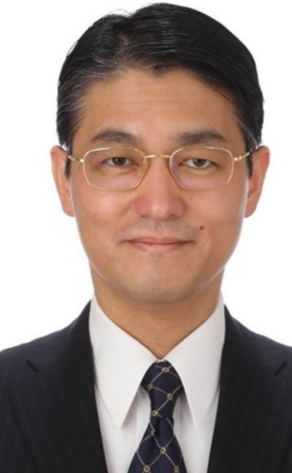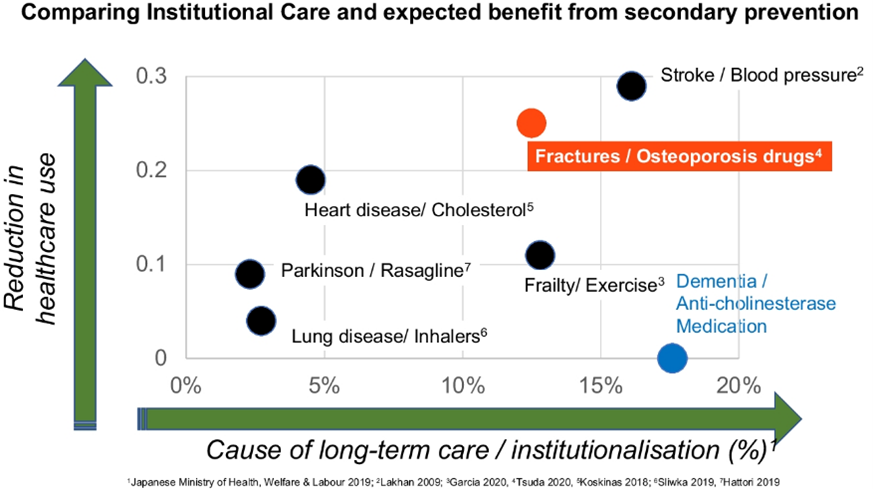In Japan, multistakeholder advocacy leads to real improvements in secondary fracture prevention

Guest Editorial
Capture the Fracture® (CTF) has invited Professor Atsushi Suzuki, member of the International Osteoporosis Foundation's (IOF) Board and CTF Governance representing Japan, to share his insights about the positive changes in secondary fracture prevention and patient care since the landmark FLS reimbursement scheme took effect in Japan. Atsushi Suzuki is Professor and Chair in the Department of Endocrinology, Diabetes and Metabolism, Fujita Health University School of Medicine, and member of the IOF Committee of Scientific Advisors and the Asia Pacific Regional Advisory Council.
It's estimated that in Japan, there are approximately 13 million individuals living with osteoporosis, with around 240,000 patients suffering from hip fractures attributed to osteoporosis annually. Despite the enormous burden of fragility fractures, diagnosis and treatment rates have been extremely low. In 2021, a large study by Nakatoh et al. described BMD testing and osteoporosis treatment rates among individuals with hip fractures, vertebral fractures, and mixed fractures (individuals who had sustained two fractures on the same day). The investigators utilised medical insurance data from the National Database of Health Insurance Claims and Specific Health Check-ups of Japan for the period April 2012 to March 2019. The study found that BMD testing after fracture was undertaken for only 22.3%, 43.6% and 28.1% of the hip fracture, vertebral fracture and mixed fracture groups, respectively. Osteoporosis treatment within 12 months of fracture was received by only 31.9%, 61.7% and 46.6% of the hip fracture, vertebral fracture and mixed fracture groups, respectively.
The enormous burden of osteoporosis and fragility fractures, coupled with the evident gap in diagnosis and management as identified by the study mentioned above, underlined the need for standardized and improved secondary fracture prevention measures. Too many patients, including patients who sustain hip fractures, were not being identified and treated to reduce their risk of recurring fractures.
Today, thanks to multi-stakeholder advocacy efforts over the past few years, including those of the IOF Capture the Fracture® program, the Fragility Fracture Network Japan, the Japan Osteoporosis Society, and the Japan Osteoporosis Foundation, improvements in post-fracture care, and an increase in the number of Fracture Liaison Services in the country are driving change in secondary fracture prevention.
A major improvement occurred in April 2022 with the initiation of a new reimbursement framework for Fracture Liaison Services, specifically targeting patients who have suffered fragility hip fractures. The core elements added to the updated scheme were surgery of new-onset hip fracture and the evaluation/treatment for osteoporosis in accordance with both national guideline and FLS clinical standards. The reimbursement framework encompasses comprehensive evaluation for secondary fracture prevention at all stages of care. For this reimbursement the patients must have assessment and treatment in a registered acute care hospital. If an FLS program is available in that hospital, the patents’ continued care in a convalescence rehabilitation hospital and outpatient clinic can also be reimbursed.
Also, since the launch of the reimbursement scheme, work on hospital registration for the Japan Hip Fracture Registry has been ongoing in order to monitor hospital performance. The goal is to drive the implementation of as many FLSs as possible, whilst ensuring optimal standards of patient care by gradually improving the quality of each FLS.
Since the changes, approximately 1,900 acute care hospitals in the country have applied for the FLS reimbursement scheme. The potential benefits of having widespread FLS across hospitals in Japan are highlighted by this graph, published in the paper by Javaid et al. The graph shows the high healthcare burden of fractures compared to many other common causes of long term-care, and the potential benefits of secondary prevention.

Since the implementation of the reimbursement scheme, the number of FLS in the Capture the Fracture® Network has more than doubled. At the beginning of 2022, 43 Japanese FLS were part of the network. Today, 93 FLS in Japan have joined the Capture the Fracture® network, of which 19 are gold and 24 are silver standard services. In two years, 50 additional FLS have joined the Network; a very positive outcome from the reimbursement scheme. In order to support FLS, the Japan Osteoporosis Society has established the system to certify healthcare professionals as Liaison Service coordinators, and the number of certified coordinators increased from 3,450 in 2022 to approximately 4,800 in 2024.
We’re on the right trajectory, and with greater implementation of FLS in the coming years, we will succeed in enhancing the quality of post-fracture patient care and broadening access to secondary fracture prevention measures, providing better support to the estimated 240,000 people who suffer a hip fracture every year in Japan. As we look toward the future, secondary fracture prevention for other fragility fracture sites, such as vertebral and wrist, will be critical in the response to the large expected increase in the number of fragility fractures in the coming years.